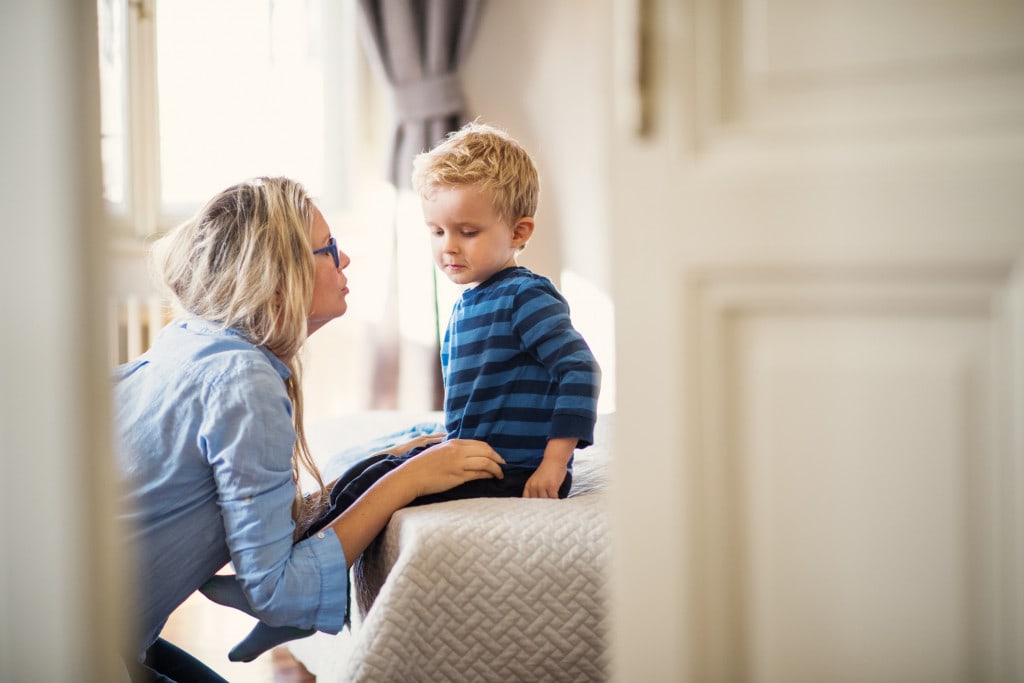“No, Billy, stop throwing the ball inside.”
“No, don’t hit your brother, Jamie!”
“No, Jessica, you cannot have another ice cream.”
“No, no, NO!”
Do you ever feel like you are playing a never-ending loop of the word “no” in your household? Well, you aren’t alone. “No” is a word we use to stop our children from doing something. We use it for setting limits and safety. However, our kids can almost seem immune to the word after a while. We use it so often that it loses meaning. Some research points to two psychological concepts: semantic satiation and mental fatigue, which outline the idea that if we frequently use the word “no” (or any word really, like don’t, stop, etc.), it can desensitize our child to what it actually means.1
It’s not that we shouldn’t say no. We need to set boundaries and limits and keep our children safe, but we obviously can’t agree with everything our child requests or approve/allow every behavior they exhibit. We need the word “no” for critical times, urgent times when we need our children to really hear the word and fully understand it means stop . . . instantly. So, what can we say instead of “no” to get our kids to listen?
How to Stop Saying “NO!”
Redirect.
Instead of saying no, note their behavior and see if you can identify what need they are trying to meet. Try to redirect them instead. If you can master this strategy, it shows your child you are listening to them (by identifying the communication behind the behavior). They are calmed/soothed because you are still meeting their underlying need. This reduces their limit and boundary testing.
For instance, “No, Sarah, stop jumping on the couch,” versus “Sarah, I can see you want to jump. Shall we go on the trampoline or play hopscotch?” Here, you have identified a physical need to jump or express energy or emotion through activity and have moved towards a more pro-social way of expressing your child’s needs.
Positive reframe.
Instead of telling your child how “not” to do something, try to reframe and tell them how they “could do” something. Not only do you avoid the word no, but you are also reinforcing a limit positively. If you don’t like your child climbing on chairs and standing to reach other objects, instead of saying, “No, stop climbing on chairs,” you could reframe it to something like, “Chairs are for sitting on.” Remind them of the purpose of chairs.
Show, don’t tell.
Get them to listen by demonstrating and modeling appropriate behaviors. Instead of saying, “Don’t scratch people when you are angry,” you could show them what a gentle touch looks like. Showing kids what kind of physical touch or boundaries is appropriate makes it easier to understand.
You could also help your child figure out what kinds of behaviors can help them express their anger in another way. Something like ripping up paper, blowing bubbles, having a cuddle, or doing star jumps. Whichever strategy helps your child in a moment of frustration. It also builds the connection between you and your child when you acknowledge and respond to their emotions. They feel seen and heard and are less likely to engage in challenging behaviors to draw your attention to their needs.
Communicate calmly.
Yelling loudly or repeating the words “no,” “don’t,” and “stop” is ineffective. It doesn’t mean our children hear us or listen any harder. To get them to really hear your message, it helps to get quieter (they need to listen harder). Get down on their level, make eye contact, and lower your voice. Speak calmly and slowly, perhaps use some of the other tips to avoid saying no, and really focus on communicating with your child.
Pause and choose your words wisely.
We need to save the word “no” for emergencies or critical situations so that when we use it, the word still has meaning when we choose to say it. So, unless something is urgent and you need your child to cease doing something immediately, take a moment to pause and consider your response. When you are calm, you are less likely to react and can instead act intentionally using the above strategies. Allow yourself a moment of reprieve to collect your thoughts and move forward with intention.






























